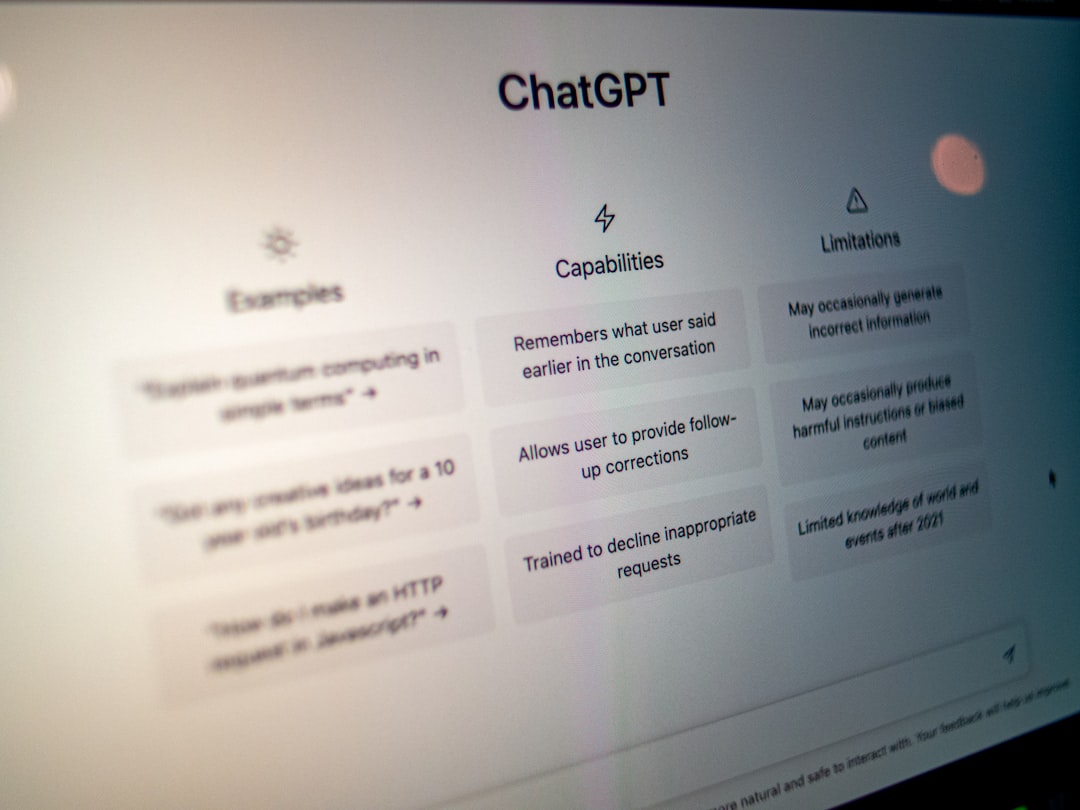In the fast-evolving world of artificial intelligence, two powerful tools have emerged as frontrunners in productivity and creativity enhancement: Microsoft Copilot AI and ChatGPT. Each offers unique functionalities, capabilities, and strengths, making them appealing for different user needs. While they both harness the power of large language models, their designs, integrations, and use cases differ significantly. Choosing the right solution depends heavily on how you intend to use AI in your workflow.
An Overview of Microsoft Copilot AI
Microsoft Copilot AI is a suite of AI-assisted features integrated directly into Microsoft 365 applications such as Word, Excel, PowerPoint, and Outlook. By embedding AI functions within tools millions already use, Microsoft aims to streamline everyday tasks such as writing emails, summarizing documents, analyzing data, or designing presentations.
Under the hood, Microsoft Copilot AI is powered by OpenAI’s GPT models, tailored and controlled within the Microsoft ecosystem. The integration with Microsoft Graph allows Copilot to personalize outputs based on your documents, calendar events, emails, and other Microsoft data, provided the necessary permissions are granted.
Key advantages of Microsoft Copilot AI include:
- Deep Microsoft 365 Integration: Copilot works directly within apps like Excel and Word, offering in-context AI assistance.
- Enterprise Focus: Designed for work efficiency, especially for business and corporate settings.
- Privacy and Security: Adheres to Microsoft’s robust enterprise standards for data privacy and governance.

What Is ChatGPT?
ChatGPT is an AI chatbot created by OpenAI, accessible through a web interface and various apps. It is powered by large language models like GPT-3.5 or GPT-4, depending on the subscription level. Originally released as a conversational chatbot, ChatGPT has expanded to include not just text interactions but also features like code generation, data analysis, image understanding, and file uploading (with the ChatGPT Plus plan and ChatGPT Pro).
While not natively integrated with productivity tools like Microsoft Copilot, ChatGPT excels in flexibility and creative capabilities, acting as an all-purpose AI assistant for writers, developers, students, and hobbyists.
Notable features of ChatGPT include:
- Wide Range of Use Cases: Can assist with writing, brainstorming, coding, translating, tutoring, and much more.
- Cross-Platform Accessibility: Available via browser, mobile apps, and API access.
- Custom GPTs (in ChatGPT Plus): Allows users to fine-tune or create GPTs tailored to specific tasks.
- Plug-ins and Tools: Offers add-ons like image generation, browsing, code interpreter, and file analysis.

Feature-by-Feature Comparison
| Feature | Microsoft Copilot AI | ChatGPT |
|---|---|---|
| Integration | Built into Microsoft 365 apps like Word and Excel | Stand-alone web and app interface or via API |
| Target Audience | Enterprises, Office users, knowledge workers | Writers, developers, researchers, general public |
| Customization | Limited to organizational and user data integrations | Highly customizable with prompt engineering and GPT creation |
| Use Scenarios | Email drafting, report summarization, spreadsheet analysis | Content creation, idea generation, coding, tutoring |
| Data Privacy | Follows Microsoft’s enterprise security standards | Follows OpenAI’s policies, with user-selectable data usage settings |
Which One Should You Use?
The decision between Microsoft Copilot AI and ChatGPT largely depends on your specific needs and environment. Here are a few scenarios to help guide your choice:
Use Microsoft Copilot AI if:
- You heavily work within the Microsoft 365 ecosystem.
- You need help automating repetitive document tasks in Word, Excel, etc.
- Your organization prioritizes enterprise-level control and security.
- You want AI embedded into tools you already use daily.
Use ChatGPT if:
- You prefer a versatile AI assistant available on web and mobile apps.
- You need creative help (e.g., writing stories, solving logic puzzles, coding).
- You value personalization and want to build your own GPTs.
- You are an individual user or freelancer exploring a wide range of topics.
Cost may also factor into your decision. Microsoft Copilot AI is often part of enterprise-level packages or premium subscriptions within Office 365, while ChatGPT offers a free tier as well as a ChatGPT Plus subscription at $20 per month (as of 2024), which gives access to GPT-4 and other advanced features.

Conclusion
Microsoft Copilot AI and ChatGPT are both powerful AI tools with different strengths. Microsoft Copilot is the natural choice for business professionals embedded in the Microsoft suite, while ChatGPT shines for creative and diverse use across personal and academic domains.
Ultimately, these tools are not mutually exclusive. Many users may benefit from using both—Copilot during work, and ChatGPT for after-hours problem solving or creativity boosts. As AI continues to evolve, the line between productivity and creativity tools will blur even more, unlocking new ways to work smarter and explore ideas faster than ever.
FAQs
- 1. Is Microsoft Copilot using the same AI as ChatGPT?
- Yes, Microsoft Copilot is powered by OpenAI’s GPT models, similar to ChatGPT, but with a different implementation and integration with Microsoft services.
- 2. Can I use Microsoft Copilot for free?
- Only certain Microsoft 365 plans come with Copilot capabilities. It’s typically available as a premium feature for enterprise and business users.
- 3. Is ChatGPT better for writing?
- ChatGPT is excellent for creative writing, brainstorming, and flexible content creation. Copilot is more focused on professional documents, summaries, and formatting within Office tools.
- 4. Does Copilot work offline?
- No, Microsoft Copilot requires an internet connection to access the AI models and sync with Microsoft Graph data.
- 5. Can I build my own AI assistant with ChatGPT?
- Yes, with the ChatGPT Plus plan, you can create and customize your own GPTs to function as personal assistants or for specific tasks.